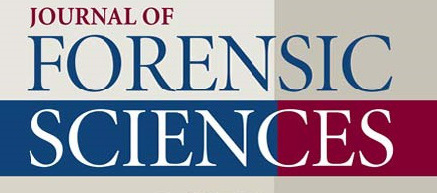Article: The Analysis of 3D Printer Dust for Forensic Applications
The Journal of Forensic Sciences is now offering an early viewing of a new article by Microtrace scientists. “The Analysis of 3D Printer Dust for Forensic Applications” is co-authored by Kelly Brinsko-Beckert and Christopher Palenik.
As 3D printers are becoming more widespread and easily accessible, there has been increasing concern about their use in printing objects such as guns and suppressors. The release of dust particles during the printing process has been explored, but little has been written about the chemical features that define this dust. This study was undertaken to recover, analyze, and identify the dust produced during the 3-D printing process in the context of forensic trace evidence analysis.
To access the paper online, please visit the Wiley Online Library, otherwise, please contact us and we will be happy to provide a copy of the article.
This paper was supported in part by a grant from the National Institute of Justice.
Abstract
“The Analysis of 3D Printer Dust for Forensic Applications”
Kelly Brinsko‐Beckert M.S., Christopher S. Palenik Ph.D.
Journal of Forensic Sciences, 2020
https://doi.org/10.1111/1556-4029.14486
3D printers are becoming increasingly efficient and economical, and thus more widespread and easily accessible to consumers and businesses. They have been used to print nefarious objects such as guns and suppressors. Previous research has documented the release of dust particles during the printing process; however, little has been written about the morphology and chemical features that define the dust emitted by these printers. This study was undertaken to recover, analyze, and identify the dust produced during the printing process in the context of forensic trace evidence analysis. Samples were collected from a variety of 3D fused deposition modeler printers, representing both consumer and commercial grade models. This work focused on printers that use thermoplastic filaments composed of acrylonitrile butadiene styrene (ABS) or polylactic acid (PLA), two of the most commonly used filament polymers. Swabs were used to collect dust within the printer chamber and then processed to isolate the dust particles. Particles produced from ABS filaments are most easily recognized via light microscopy through a combination of color, morphology, and fluorescence. The composition of these particles can be confirmed through analysis by either FTIR or Raman microspectroscopy. These methods can also be used to identify ABS fillers and pigments within the printer dust particles. In contrast, dust from PLA printers consistently contained finer, submicron‐sized particles that could be observed by field emission scanning electron microscopy. Because the size of the particles precludes their identification using vibrational spectroscopy methods, pyrolysis‐GC‐MS was used to confirm the presence of PLA.
How May We Help You?
Contact usto discuss your project in more detail.








